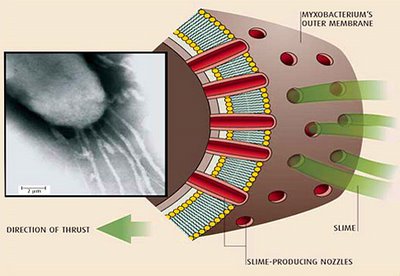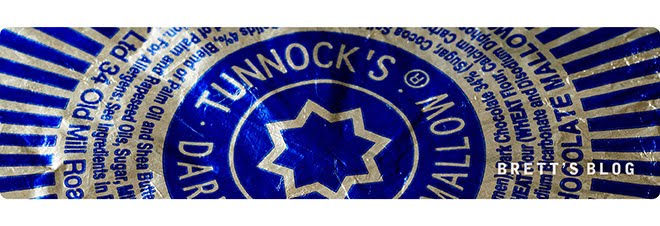
Myxobacteria live in animal dung and organic-rich soils. They glide in water films across solid surfaces, secreting polysaccharide slime tracks.
New Scientist reports that biologists thought the bugs produced the slime for a similar reason snails do, to aid movement. But now it turns out that the bacteria push themselves along by ejecting the slime from nozzles on their bodies.
Myxobacteria have about 250 (well, you try counting 'em on something that small) nozzles located at each end . By squirting slime from one set or the other they can move at a speedy 10 micrometres per second (apparently that's quite speedy for a mxyobacteria).
The key to producing this impressive turn of speed (for a mxyobacteria) is a polysaccharide - a chain of molecules created by a polymerisation process that links molecules together inside the nozzle. When the chain is created slowly, it oozes from the nozzles without creating motion. But when the chain is produced faster than the slime can escape, it is compressed and shoots out like water from a super-soaker, producing thrust.
Chemist Michael Rubinstein at the University of North Carolina makes the (less than earth-shattering) observation that "This mechanism could be utilised in nanoscale devices for propelling small objects."
------------

1 comment:
I think I know some people that already implement that kind of technology for themselves. And they are not small!!
Post a Comment